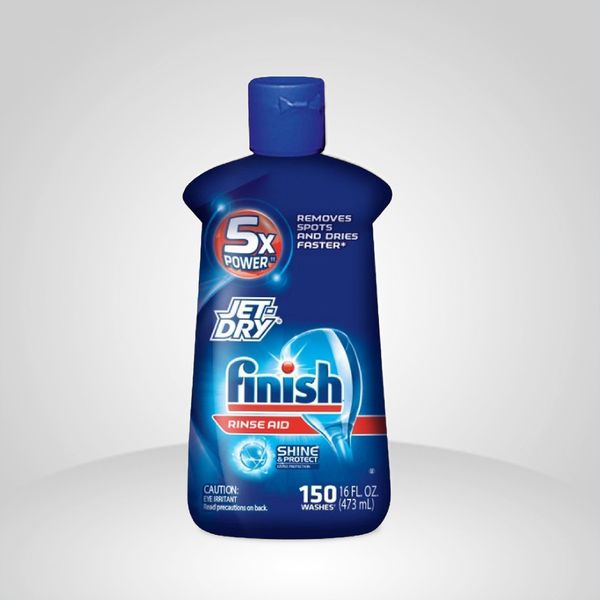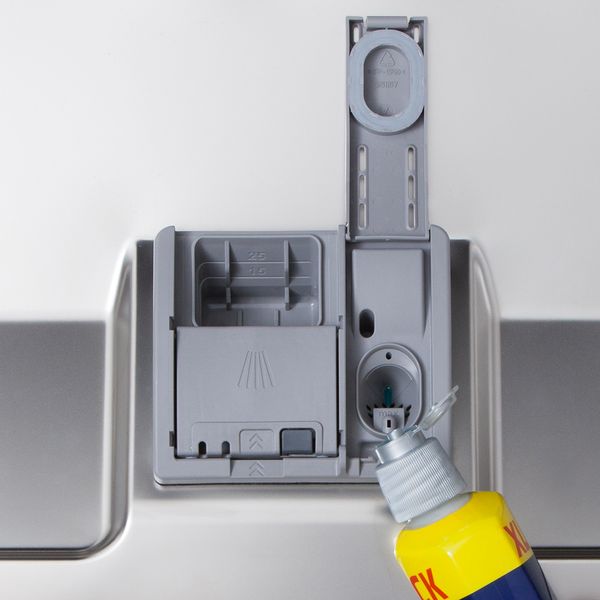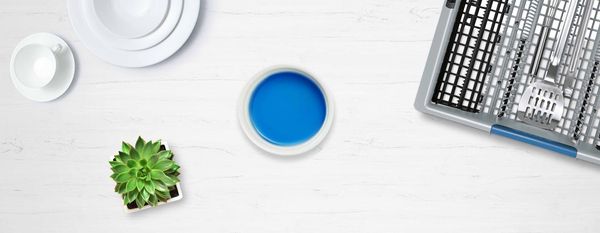
What is rinse aid and how does it work?
Rinse aid is a surfactant, meaning it lowers the surface tension of water, so it more easily slides off dishes in the dishwasher. Especially in hard water areas, rinse aid helps prevent water spots from forming on, for example, glasses, plates and cutlery. It also helps dishes dry faster.

Where rinse aid goes in the dishwasher.
On the inside of the dishwasher door, next to where the detergent goes, is a rinse aid dispenser that must be manually filled. It releases the liquid at the correct time and temperature for each programme.
Pro tip: If you notice rainbow streaks (too much rinse aid) or water stains (too little) on utensils, change your dishwasher's rinse aid settings as described in the user manual.
Step-by-step: how to use rinse aid.
1. Open the rinse aid dispenser by pressing on the latch of the lid and pulling the lid open.
2. Carefully pour the liquid rinse aid in the dispenser until it reaches the max line. Make sure you do not overfill the dispenser as it may leak when you close the compartment.
3. Close the lid. Make sure you hear a click to ensure the compartment is fully closed and sealed.
4. Once the lid is closed, check around the compartment and wipe up any excess rinse aid that may have puddled.
If you notice rinse aid residue...
If you notice rinse aid residue on the inside of the dishwasher door, it is probably because some of the rinse aid did not get poured directly into the compartment. The spill residue may roll down the inside of the dishwasher door once you close it to start a cycle.
Tip: For easier pouring and minimized spillage, twist off the rinse aid bottle cap before pouring. It also helps to pour from the side of the compartment.
Keep reading for advice on how to avoid spillage and properly refill the rinse aid compartment.
FAQs.
We don't recommend using homemade rinse aid in your dishwasher since it might damage the appliance and could be hazardous to your health. Additionally, using homemade rinse aid in your dishwasher might invalidate the warranty.
Not using rinse aid decreases the drying performance of your dishwasher. It might also leave water spots on your dishes, especially if you have hard water.
When the rinse-aid refill light appears on the dishwasher control panel.
Bosch dishwashers come preset to level 2. If there are streaks or water marks on your dishes, you can change the settings on your dishwasher by following the instructions set out in the user manual.







